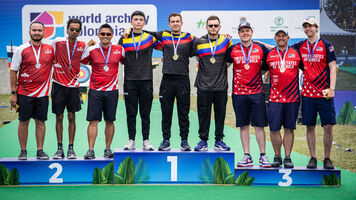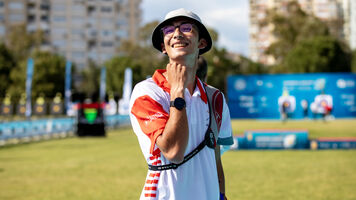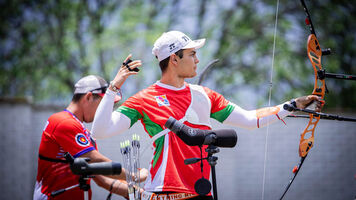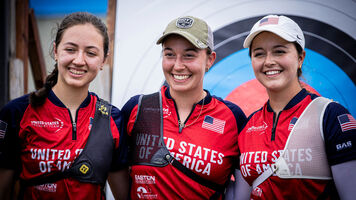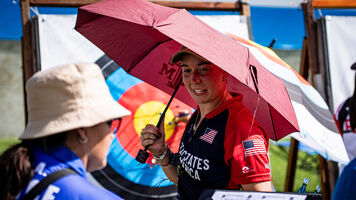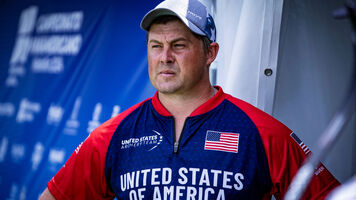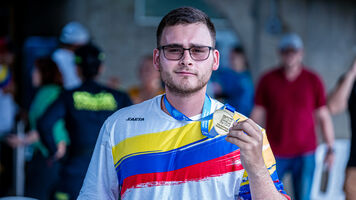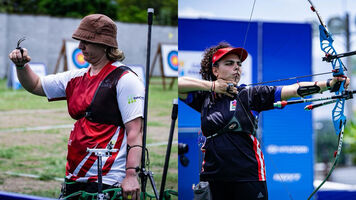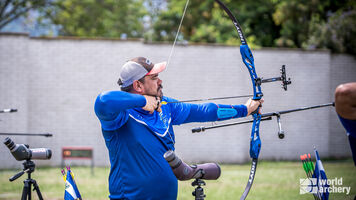Huston says Sambodromo venue “gladiatorial”
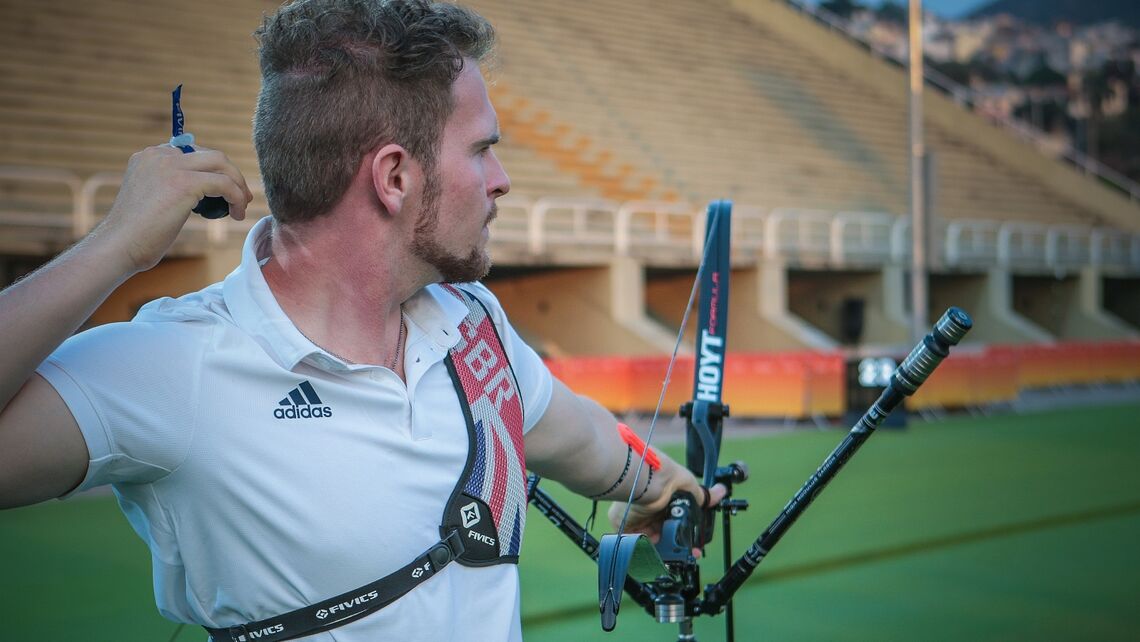
Great Britain’s Olympic archers held a conference for the press in Rio, ahead of competition, and revealed what they thought of the venue, their chances in the competition and plans post-Games.
Patrick Huston, a 20-year-old Northern Irishman, finished third in the European Championships in 2016, also qualified his place to the Olympics at the same tournament in May. He said that securing a space in the latter stages of the quota assignment process, which began at the World Archery Championships in 2015, was a good sign.
“If you look at historical performances, the people that qualify at the European Championships in the year of the Olympics almost always do well, because it means you are performing really well that year,” he explained.
Huston took the Rio invitation ahead of Larry Godfrey, the British Olympian who finished fourth in Athens in 2004.
“I’d very much like to better that achievement of his,” added Huston.
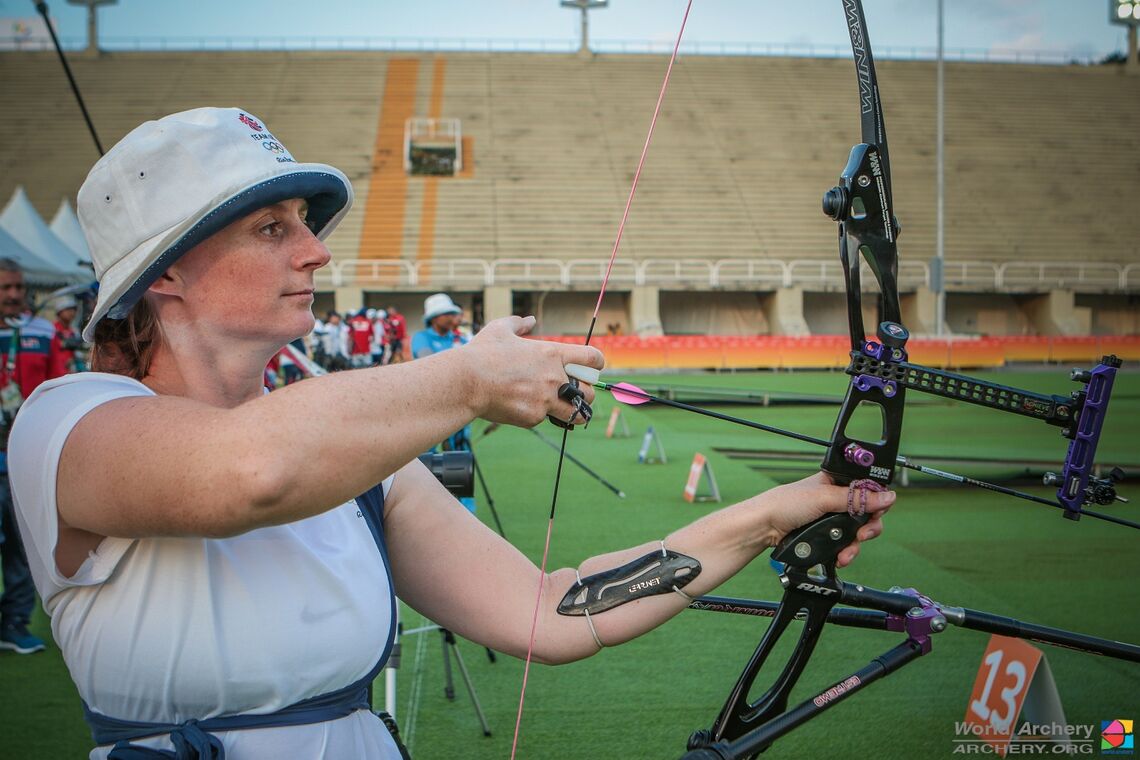
He and Folkard, as two of a 128-strong field of archers, will compete for Olympic titles in Rio de Janeiro’s famous Sambodromo, the stadium that lies at the end of the route of the city’s annual Samba parade.
“On the ranking range you can look through the arch and see the Christo Redentor and a favela at the back, you’ve got this incredible view of Rio,” said Huston.
“The finals venue has got stands just three or four metres from the archers.”
Everyone’s attention, he said, would be square on the action on the field.
“It’s going to be really gladiatorial in that way, really intense,” he added. “It’s going to be an absolutely awesome venue to shoot in.”
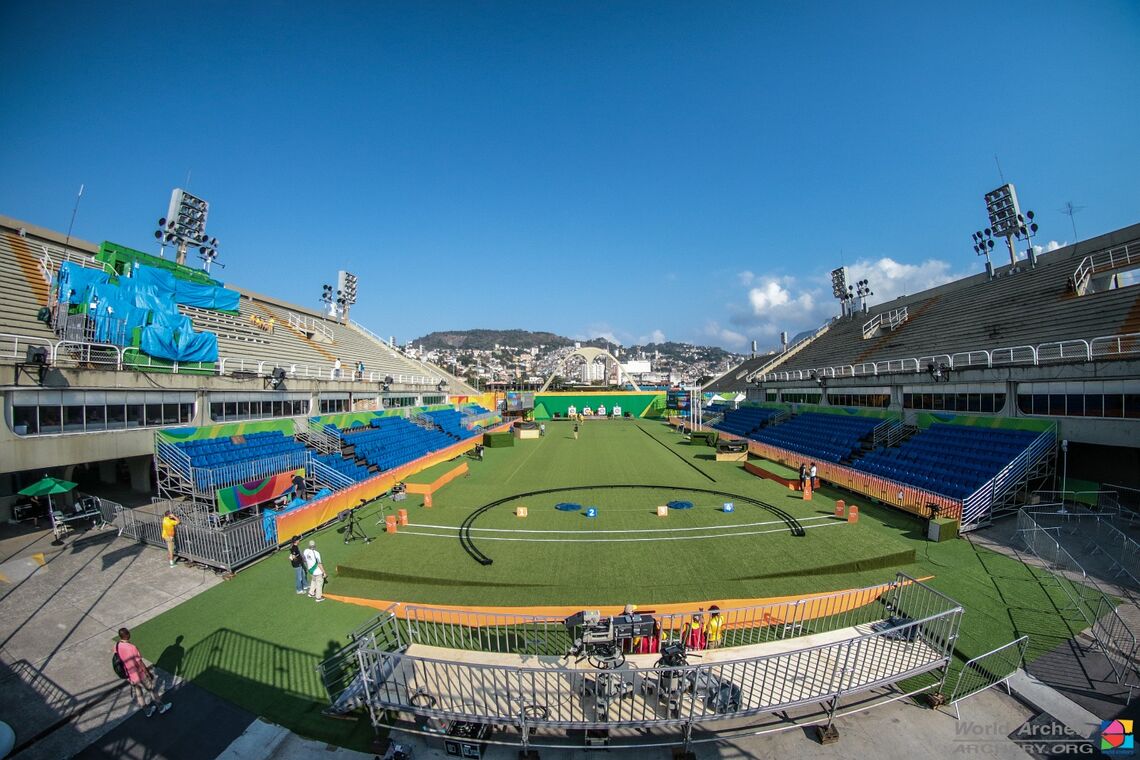
Patrick also said he didn’t want to meet a Korean in the early rounds because they wouldn’t be nervous, and hoped to seed well to avoid them until at least the last 16, where he felt he might have the edge in confidence: “I’ve mentally rehearsed beating them all; so [in my mind] I’ve beaten them before and I’ll beat them again.”
While Rio marks Patrick Huston’s Olympic debut, his teammate at the Games has far more experience under her belt.
Naomi Folkard’s first Olympic appearance came in Athens in 2004, where she finished 11th individually. She also competed in Beijing and London, coming 15th and 17th, respectively. In 2008, she came closest to a medal when the Great British women competed in the team bronze final, but ultimately lost to France.
Folkard made it clear that she’d stop at four Olympics.
“This is it. I think Richard [Priestman, head coach of the British archery team] wants me to carry on, but this is it,” she said. “You can keep going for a long time [in archery], but I want to have a family.”
Folkard said she was committed to giving her best at her apparent last Olympics in Rio and that, under the leadership of new coach Priestman, was well prepared to do so.
“There’s a calmness about the way he approaches things. He lets me shoot the way I need to shoot,” she said.
Priestman was previously coaching the Olympic teams in Brazil – including local star Marcus D’Almeida – and Colombia before returning to Great Britain at the end of 2015. He won Olympic team bronzes as a British athlete in 1988 and 1992.
Both Folkard and Huston paid homage to the support they had received from the archery community in Britain since announced as members of the Olympic team.
“It’s really nice to know that everyone back home is behind us, it really helps us to perform at our best,” said Folkard.



